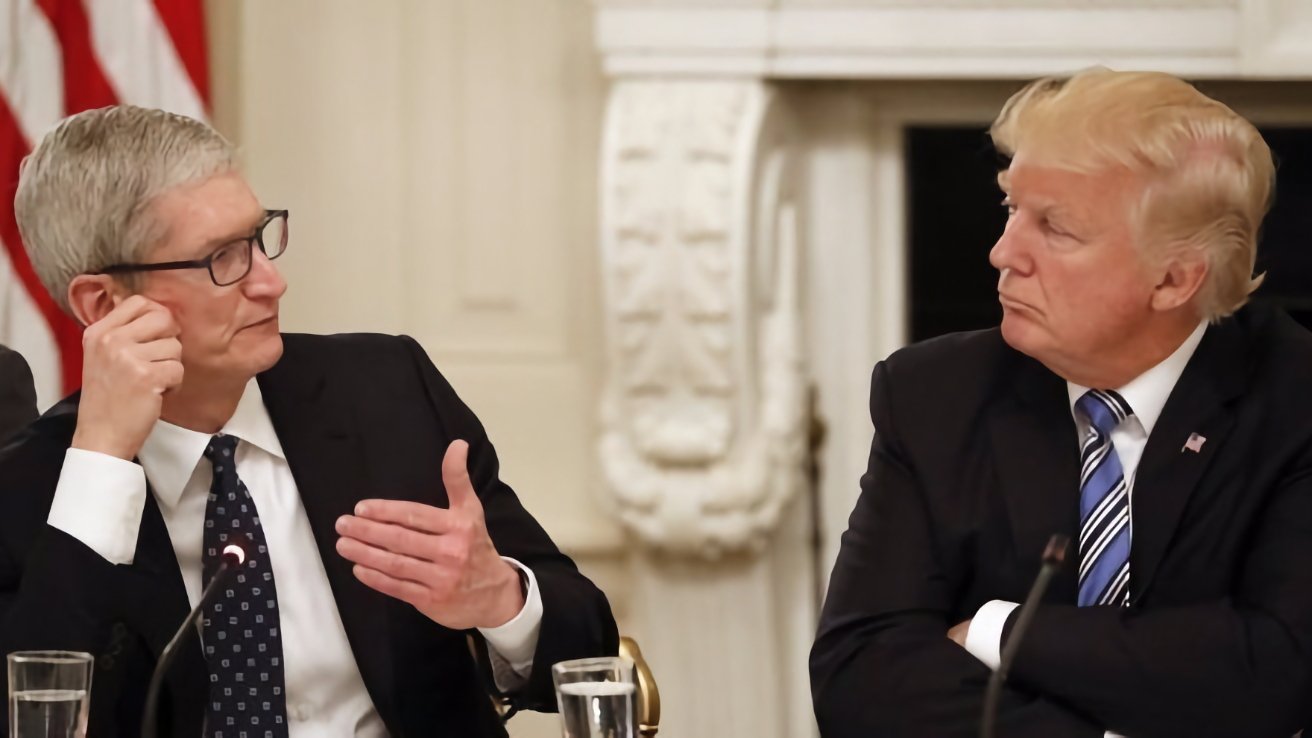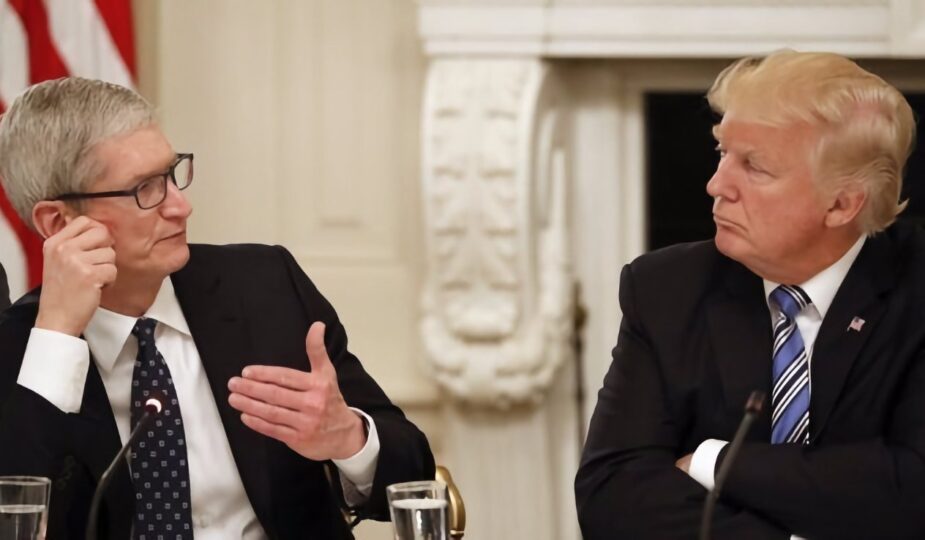Tim Cook (R) and Trump
 12 Facebook x.com Reddit Bluesky
12 Facebook x.com Reddit Bluesky
Trump imposed tariffs on China on day one, but he still maintains the illusion that it is not American consumers who will pay for it.
There is no gray area here: tariffs are not a tax on other countries, they only result in higher prices for Americans. Yet, as he did during his first term, President Trump is once again imposing tariffs, just not on China yet.
During the campaign, he promised to impose tariffs on his first day in office, and specifically that he would impose a 60% tariff on imports from China, as well as an additional 10% on Chinese goods. Neither of those things happened, and instead, the newly announced tariffs will go into effect on February 1, 2025, for Mexico and Canada.
These countries would face tariffs of up to 25%, although there is no specific number yet.
It is any tariff on imports from China that would matter to Apple and its prices, since much of its manufacturing is done there. Trump has avoided committing to the Chinese tariffs he has previously promised, but has again vowed to impose them at some point.
He has also threatened tariffs on ten countries known as the BRICS group, which includes China. Trump has also said he would increase tariffs and impose taxes on China, again by unspecified amounts, if Beijing blocks the sale of TikTok to an American firm.
An unspecified source reportedly familiar with the hesitation over Chinese tariffs said Trump instead wanted to make a deal with President Xi Jinping. However, other sources have reportedly said that, as he did in his first term, Trump is quick to change his mind and may still impose tariffs on Chinese goods.
Another possible reason for the delays is that Trump also wants to create a foreign revenue service to collect revenue from tariffs. That would require congressional approval, and it’s unclear how it would differ from existing processes — or why Trump has also been undecided about the Canada and Mexico tariffs.
The result is that American companies have no clear idea of how their costs will rise, so their American customers have no clear idea of how their prices will rise.
What this is not, and never has been, is an economic cost imposed on the countries where production for U.S. consumers takes place. And tariff price increases are almost always passed on directly to the consumer through the American companies that must pay the tariffs.
How does this affect Apple and its prices
Apple has the advantage of having previously convinced Trump to give it preferential treatment, though not always. Plus, Apple has worked over the past many years to reduce its reliance on China, with its suppliers moving production to countries like India.
The stated goal of the tariffs is that they will effectively move manufacturing and production to the U.S. If manufacturing abroad becomes more expensive, the reasoning goes, then companies will invest billions in building U.S. factories they may not need after the next administration.
More likely, though, companies will move from China to other countries with a manufacturing base the U.S. doesn’t have, on which the U.S. imposes lower tariffs. Trump could always then raise those tariffs to match, but it would still likely be more cost-effective for companies to take the hit than to pay comparatively higher wages in the U.S.
Apple is already making this shift, especially to India recently. According to Apple CEO Tim Cook, it is doing so primarily because of a skills shortage in the US, not because of the cost of wages.
Impact on Consumers
In an October 2024 report, the Consumer Technology Association (CTA) looked at how the proposed tariffs would impact consumers. As part of this, the CTA concluded that companies would not move to the US and that there would be what it called “unintended consequences.”
These include a downgrade of the US credit rating and increased trade restrictions imposed on the US by other countries. It would also have a less measurable but significant impact because of how it would damage the US’s reputation abroad.
Until specific tariffs are imposed, it’s impossible to estimate how badly American consumers would be hurt — though it would certainly be bad. The CTA report estimated that laptop and tablet prices could even rise by 46% from where they are now, while desktops could rise by 6.2%.
Apple is a multi-trillion dollar company, so it could, at least in theory, absorb these increases. It might choose to do so rather than see sales decline, based on the logic that a customer lost now is harder to win back once the tariffs are lifted.
However, almost always when a company is hit with tariffs, it is the end user, the consumer, who ends up paying for them.
Trump has now said that tariffs will “make us rich as hell.” Americans won't benefit, and the higher prices consumers pay as a result of import tariffs will go to the government.
Follow AppleInsider on Google News










